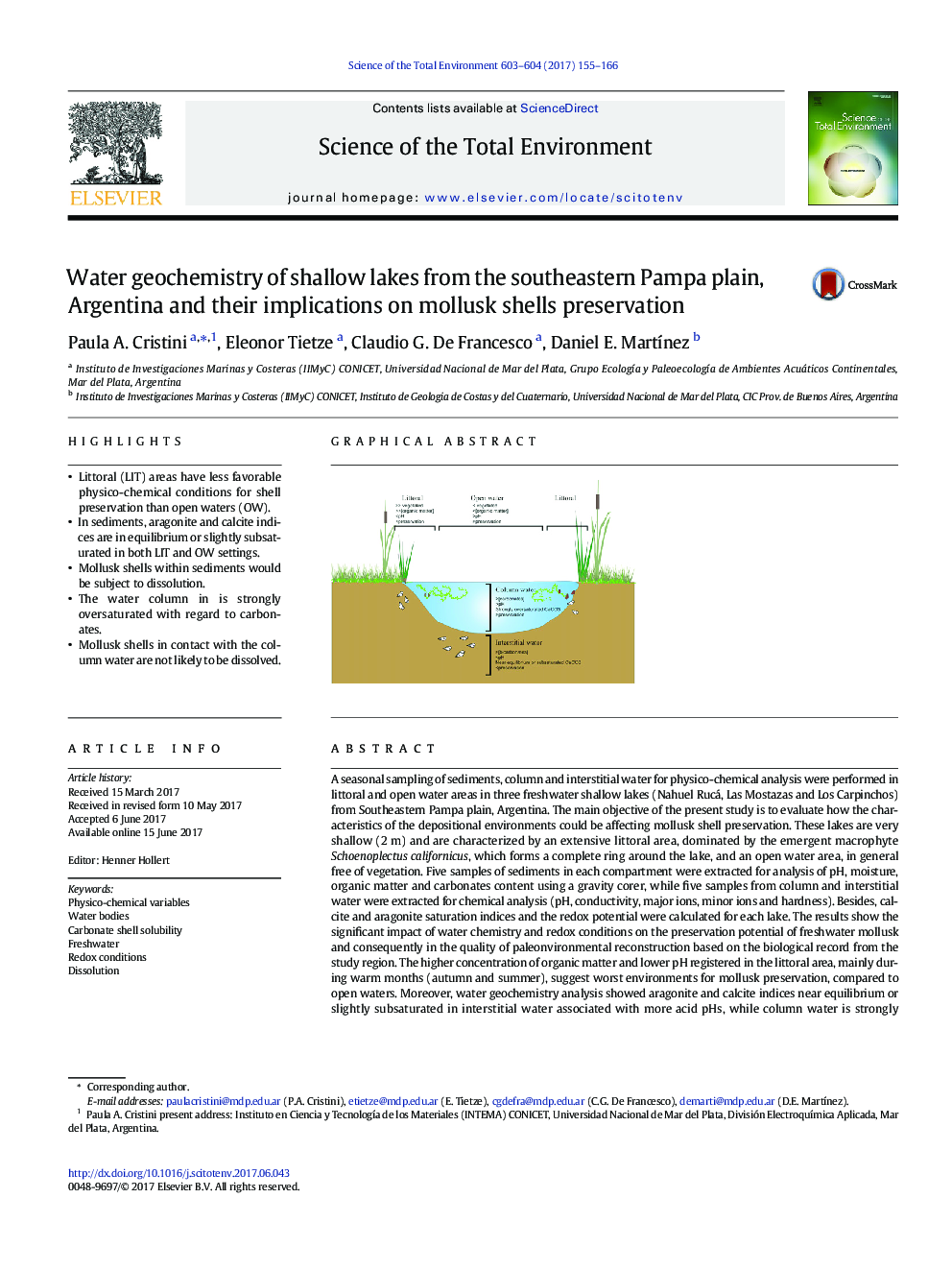| Article ID | Journal | Published Year | Pages | File Type |
|---|---|---|---|---|
| 5750287 | Science of The Total Environment | 2017 | 12 Pages |
â¢Littoral (LIT) areas have less favorable physico-chemical conditions for shell preservation than open waters (OW).â¢In sediments, aragonite and calcite indices are in equilibrium or slightly subsaturated in both LIT and OW settings.â¢Mollusk shells within sediments would be subject to dissolution.â¢The water column in is strongly oversaturated with regard to carbonates.â¢Mollusk shells in contact with the column water are not likely to be dissolved.
A seasonal sampling of sediments, column and interstitial water for physico-chemical analysis were performed in littoral and open water areas in three freshwater shallow lakes (Nahuel Rucá, Las Mostazas and Los Carpinchos) from Southeastern Pampa plain, Argentina. The main objective of the present study is to evaluate how the characteristics of the depositional environments could be affecting mollusk shell preservation. These lakes are very shallow (2Â m) and are characterized by an extensive littoral area, dominated by the emergent macrophyte Schoenoplectus californicus, which forms a complete ring around the lake, and an open water area, in general free of vegetation. Five samples of sediments in each compartment were extracted for analysis of pH, moisture, organic matter and carbonates content using a gravity corer, while five samples from column and interstitial water were extracted for chemical analysis (pH, conductivity, major ions, minor ions and hardness). Besides, calcite and aragonite saturation indices and the redox potential were calculated for each lake. The results show the significant impact of water chemistry and redox conditions on the preservation potential of freshwater mollusk and consequently in the quality of paleonvironmental reconstruction based on the biological record from the study region. The higher concentration of organic matter and lower pH registered in the littoral area, mainly during warm months (autumn and summer), suggest worst environments for mollusk preservation, compared to open waters. Moreover, water geochemistry analysis showed aragonite and calcite indices near equilibrium or slightly subsaturated in interstitial water associated with more acid pHs, while column water is strongly oversaturated related to alkaline pHs. These results suggest that carbonate remains within sediments will be subject to dissolution affecting negatively their preservation potential. However, mollusk shells in contact with the column water are not expected to be dissolved.
Graphical abstractDownload high-res image (93KB)Download full-size image
